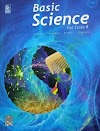Exercise
A. Answer the following in not more than 20 words.
1. What is asexual reproduction?
2. What are the male and female gametes known as in human beings?
3. Name one animal in which reproduction takes place outside the body.
4. Name the organs that form the male reproductive system.
5. Where does fertilisation take place in human beings?
6. How does the embryo receive nutrition in the mother's womb?
7. Name the organs of the female reproductive system in human beings
8. What happens to the zygote formed after the fertilisation of the ovum?
9. Name the hormone that regulates secondary sexual characters in males.
B. Answer the following in not more than 40 words.
1. What is the menstrual cycle?
2. How are twins born?
3 What are endocrine glands? What do they do?
4. What is a taboo? Give an example to illustrate how the idea of what is taboo changes with time.
C. Answer the following in not more than 100 words.
1. What are secondary sexual characters? Mention the male and female secondary sexual
characters in human beings.
2. What do you understand by gender roles' ?
3. How is the sex of a foetus determined? Why is it prohibited by law?
D. Complete the following
1. The placenta is attached to the embryo by the
2. Nonidentical twins are also called twins.
3. The hormone that regulates the secondary sexual characters in females is called
4. The gland regulates growth and controls the functioning of the other endocrine glands.
5. The adrenal glands are attached to the
6. The mixture of secretions and sperms transferred into the vagina by the penis is called
E. Choose the correct option in each of the following.
1. Sperms are produced by the
(a) testes
(b) epididymis
(c) penis
(d) scrotal sac
2. Inside the uterus, the embryo is protected by the
(a) umbilical cord
(b) Fallopian tube
(c) amniotic sac
(d) placenta
3. The level of glucose in the blood is controlled by the
(a) thyroid
(b) pancreas
(c) testis
(d) ovary
4. The thyroid controls the
(a) calcium level in the body
(b) glucose level in the body
(c) rate at which energy is produced
(d) heartbeat and blood pressure
5. Sperms collect and mature in the
(a) epididymis
(b) vas deferens
(c) scrotal sac
(d) testes
F. Label the following.
Answer
A.
1. Asexual reproduction is a type of reproduction in which offspring are produced from a single parent without the involvement of gametes.
2. The male gamete is known as sperm or spermatozoon, and the female gamete is known as an ovum or egg.
3. Sea urchin is an animal in which reproduction takes place outside the body.
4. The organs that form the male reproductive system are testes, epididymis, vas deferens, seminal vesicles, prostate gland, and urethra.
5. Fertilisation takes place in the fallopian tubes or oviducts in human beings.
6. The embryo receives nutrition in the mother's womb through the placenta, which is a specialized organ that connects the embryo to the mother's blood supply.
7. The organs of the female reproductive system in human beings are ovaries, fallopian tubes, uterus, cervix, and vagina.
8. The zygote formed after the fertilisation of the ovum undergoes cell division to form an embryo and implants in the uterus lining for further development.
9. Testosterone is the hormone that regulates secondary sexual characters in males.
B.
1. The menstrual cycle is a monthly cycle in which the female body prepares for pregnancy by thickening the uterus lining, and if pregnancy does not occur, the lining sheds in the form of menstrual blood.
2. Twins are born when two embryos develop and grow in the mother's uterus at the same time.
3. Endocrine glands are glands that secrete hormones into the bloodstream to regulate bodily functions. They control growth, development, metabolism, and reproduction.
4. Taboo refers to a social or cultural practice that is prohibited or forbidden. Example: In some cultures, eating beef is taboo, while in others, eating pork is taboo.
C.
1. Secondary sexual characters are physical traits that develop during puberty and distinguish males from females. Male secondary sexual characters include facial hair, deep voice, Adam's apple, and muscle development, while female secondary sexual characters include breasts, wider hips, and growth of pubic and underarm hair.
2. Gender roles are the societal expectations and norms associated with gender, defining how males and females should behave, dress, and interact with others.
3. The sex of a fetus is determined by the presence or absence of a Y chromosome in the sperm. It is prohibited by law to determine the sex of a fetus in some countries to prevent sex-selective abortions.
D.
1. The placenta is attached to the embryo by the umbilical cord.
2. Nonidentical twins are also called fraternal twins.
3. The hormone that regulates the secondary sexual characters in females is called estrogen.
4. The pituitary gland regulates growth and controls the functioning of the other endocrine glands.
5. The adrenal glands are attached to the kidneys.
6. The mixture of secretions and sperms transferred into the vagina by the penis is called semen.
E.
1. (a) testes
2. (d) placenta
3. (b) pancreas
4. (c) rate at which energy is produced
5. (a) epididymis
F.
ThankYou











No comments:
Post a Comment